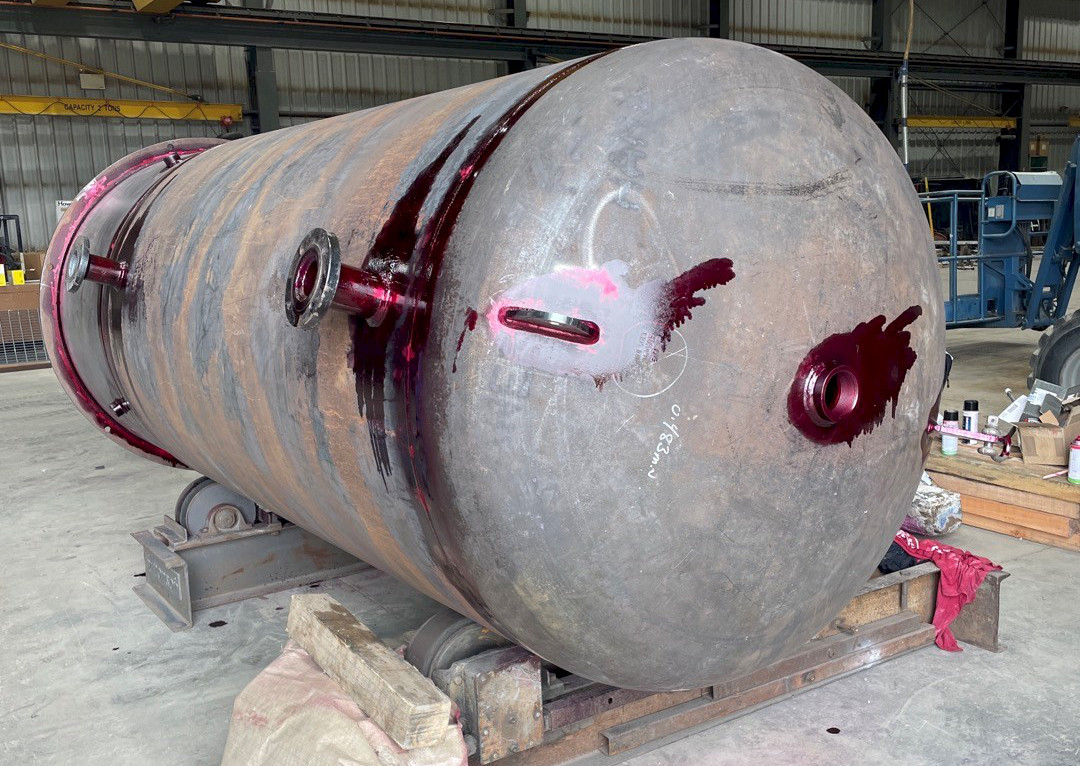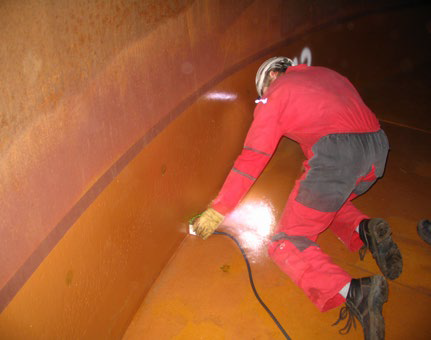Why Routine Tank Welding Inspection is Critical for Structural Honesty
Wiki Article
The Important Role of Storage Tank Welding Evaluation in Ensuring Structural Integrity and Safety And Security Conformity in Industrial Applications
In the realm of commercial applications, container welding inspection emerges as a crucial element in securing architectural integrity and ensuring compliance with security guidelines. Making use of a mix of methods such as aesthetic assessments and advanced testing techniques, these assessments offer to recognize and mitigate possible flaws prior to they intensify right into substantial threats.Importance of Tank Welding Examination

Ensuring conformity with market criteria and guidelines is another substantial element of tank welding examination. Governing bodies mandate stringent guidelines for the construction and upkeep of storage space tanks, and comprehensive inspections aid companies comply with these needs. Non-compliance can cause serious fines, consisting of penalties and shutdowns, even more emphasizing the demand for extensive inspection methods.
In addition, container welding assessment plays an essential function in keeping functional effectiveness. In recap, the value of container welding evaluation exists in its ability to protect public health and wellness, shield the environment, and ensure compliance with regulative structures.
Secret Inspection Techniques
Reliable storage tank welding evaluation relies on a range of crucial methods that ensure comprehensive examination of weld quality and architectural honesty. Among the most prevalent techniques are visual inspection, ultrasonic screening, radiographic screening, and magnetic fragment testing - Tank Welding Inspection. Each method offers one-of-a-kind benefits in evaluating different facets of the weld
Aesthetic assessment works as the very first line of protection, enabling inspectors to recognize surface area problems, irregularities, or inconsistencies in the weld grain. Ultrasonic screening employs high-frequency acoustic waves to discover inner problems, such as fractures or voids, providing a thorough evaluation of weld honesty. This approach is especially effective in spotting concerns that might not be noticeable on the surface area.
Radiographic screening utilizes X-rays or gamma rays to create photos of the welds, revealing inner discontinuities and giving a long-term record for future referral. This technique is highly reliable for essential applications where the danger of failing have to be decreased.
Finally, magnetic fragment testing is employed to identify surface area and near-surface problems in ferromagnetic materials. By using magnetic areas and fine iron particles, inspectors can determine gaps that may compromise the architectural honesty of the storage tank. Together, these strategies develop a robust structure for making sure high-quality welds in commercial applications.
Conformity With Safety And Security Requirements

Regular inspections play a critical role in guaranteeing compliance by determining prospective failings or discrepancies from recommended requirements. Inspectors are trained to evaluate weld quality, verify product requirements, and analyze the total architectural stability of tanks. Their competence is crucial in making sure that welding processes fulfill the required safety standards.
Moreover, compliance with safety criteria not just secures workers however also safeguards the atmosphere from possible dangers such as leakages or devastating failures. Organizations that focus on security compliance are much better placed to minimize dangers, improve functional performance, and promote a society of security within their workforce. In recap, keeping rigorous conformity with safety and security standards is crucial for the successful procedure of storage tank welding activities in commercial setups.
Benefits of Normal Examinations
Routine examinations are important to maintaining the architectural integrity and safety and security of welded tanks. These inspections offer an organized method to determining potential defects or weak points in the welds, ensuring that any kind of problems are dealt with prior to they escalate right into considerable failings. By conducting routine assessments, companies can find corrosion, tiredness, and various other kinds of wear and tear that might endanger container performance.Additionally, regular evaluations contribute to conformity with industry laws and standards. Following these standards not only minimizes lawful threats however likewise boosts the company's online reputation for safety and security and reliability. Routine evaluations foster a positive safety society, encouraging workers to recognize and prioritize the relevance of tools integrity.

Instance Studies and Real-World Applications
Instance studies and real-world applications illustrate the concrete effect of efficient container welding examination techniques. One notable example is a large petrochemical center that faced substantial functional interruptions because read this post here of leaks in tank. Following the implementation of rigorous welding examination methods, consisting of aesthetic and ultrasonic screening, the center determined important problems in weld joints that might have led to tragic failures. This aggressive approach not only protected against ecological threats yet likewise saved the business millions in potential clean-up costs and regulatory penalties.learn the facts here now Similarly, a water therapy plant executed a comprehensive examination program for its container welding procedures - Tank Welding Inspection. By integrating non-destructive screening techniques, the plant was able to find very early signs of rust and tiredness in weld joints. This timely intervention extended the life-span of the tanks and made certain conformity with security guidelines, therefore safeguarding public health and wellness
These case research studies emphasize the relevance of normal and systematic tank welding assessments. By prioritizing these methods, industries can alleviate risks, improve architectural integrity, and make certain conformity with security standards, inevitably leading to enhanced operational effectiveness and minimized obligations.

Verdict
Finally, tank welding evaluation is a vital component of preserving architectural stability and safety in industrial applications. Utilizing numerous assessment strategies guarantees early detection of possible flaws, therefore stopping disastrous failures. Adherence to safety requirements even more improves functional reliability and anchor conformity with governing requirements. Ultimately, routine assessments not only shield public health and the atmosphere however likewise add to the longevity and effectiveness of vital assets, emphasizing the crucial role of this technique in industrial operations.Report this wiki page